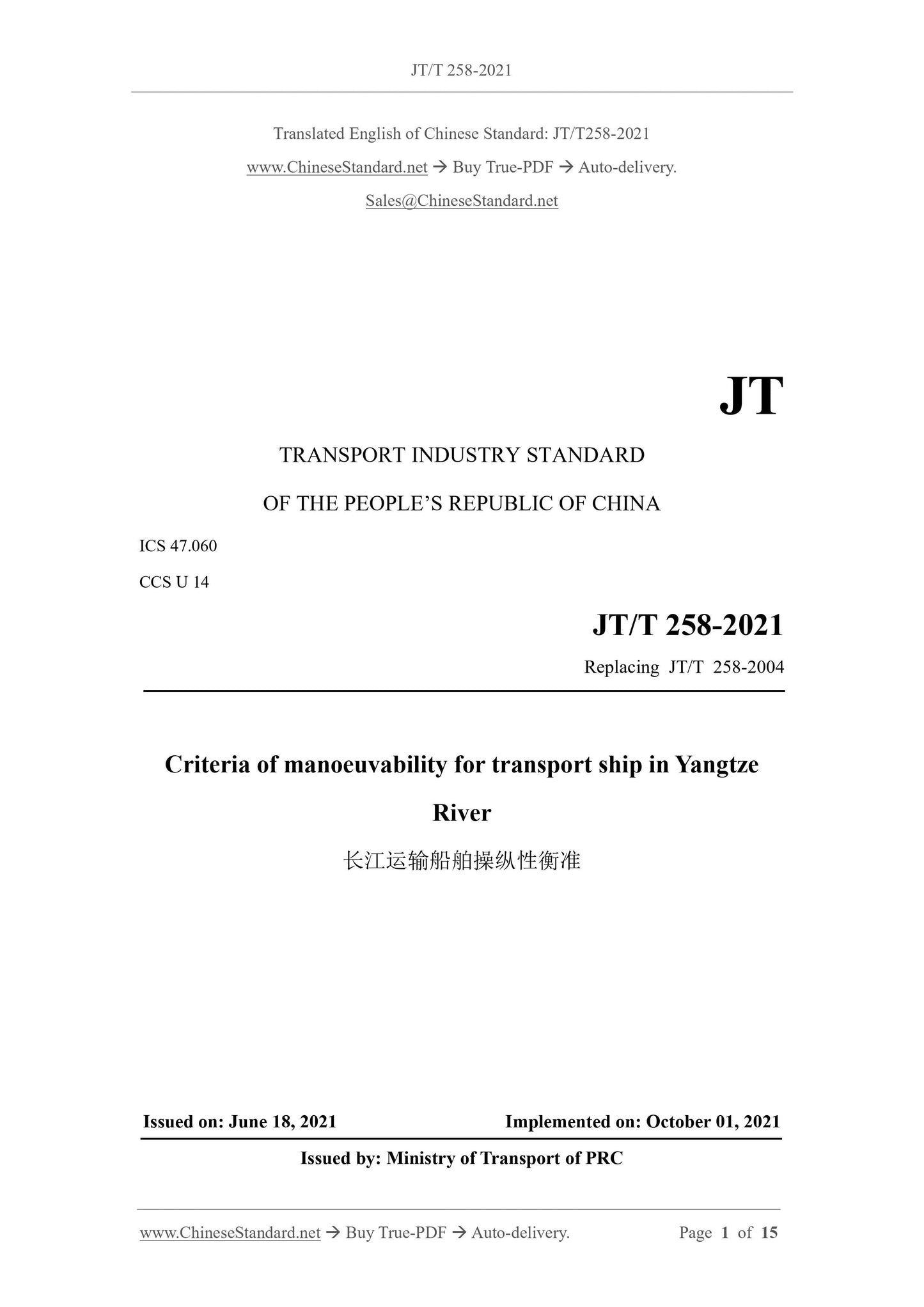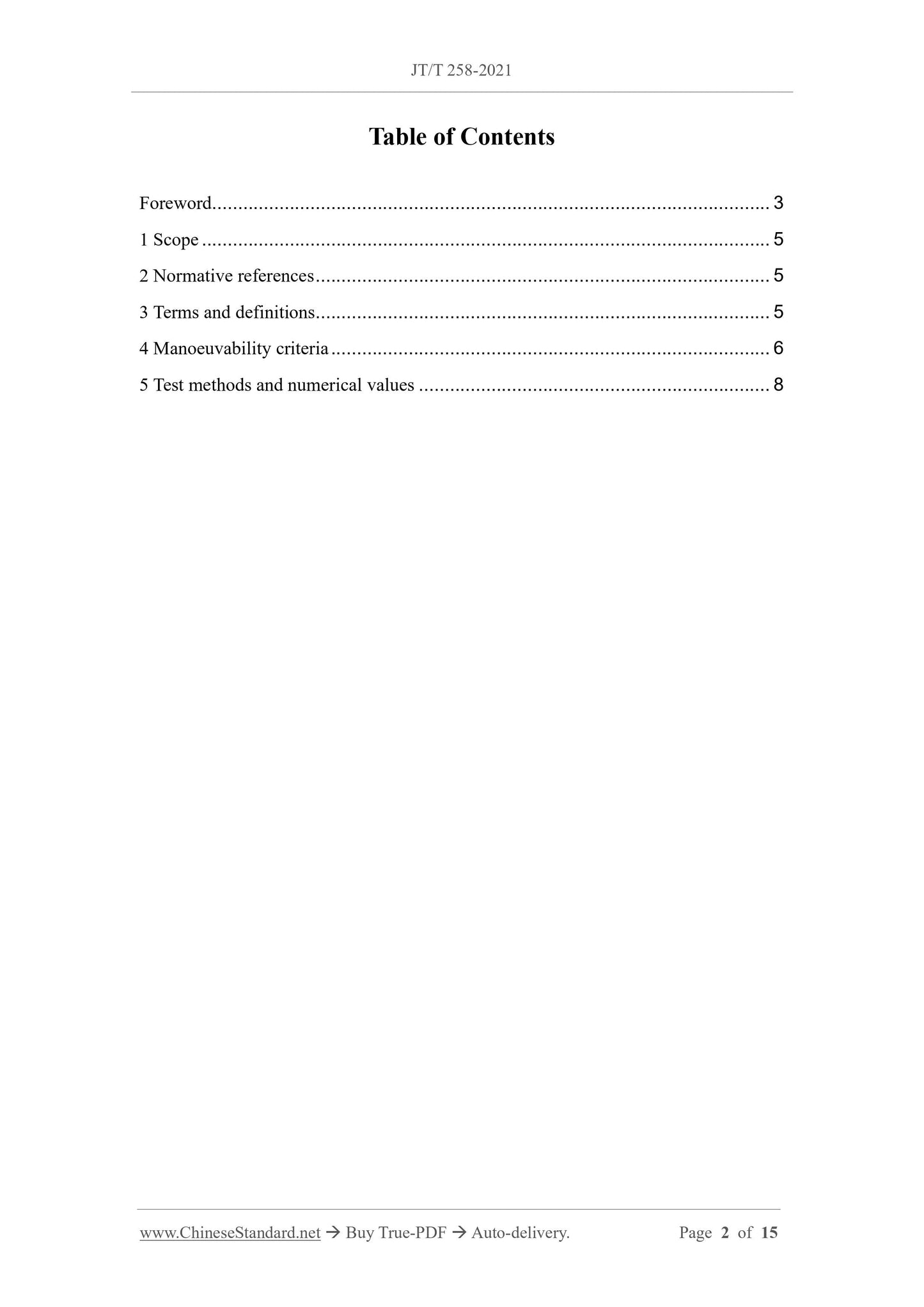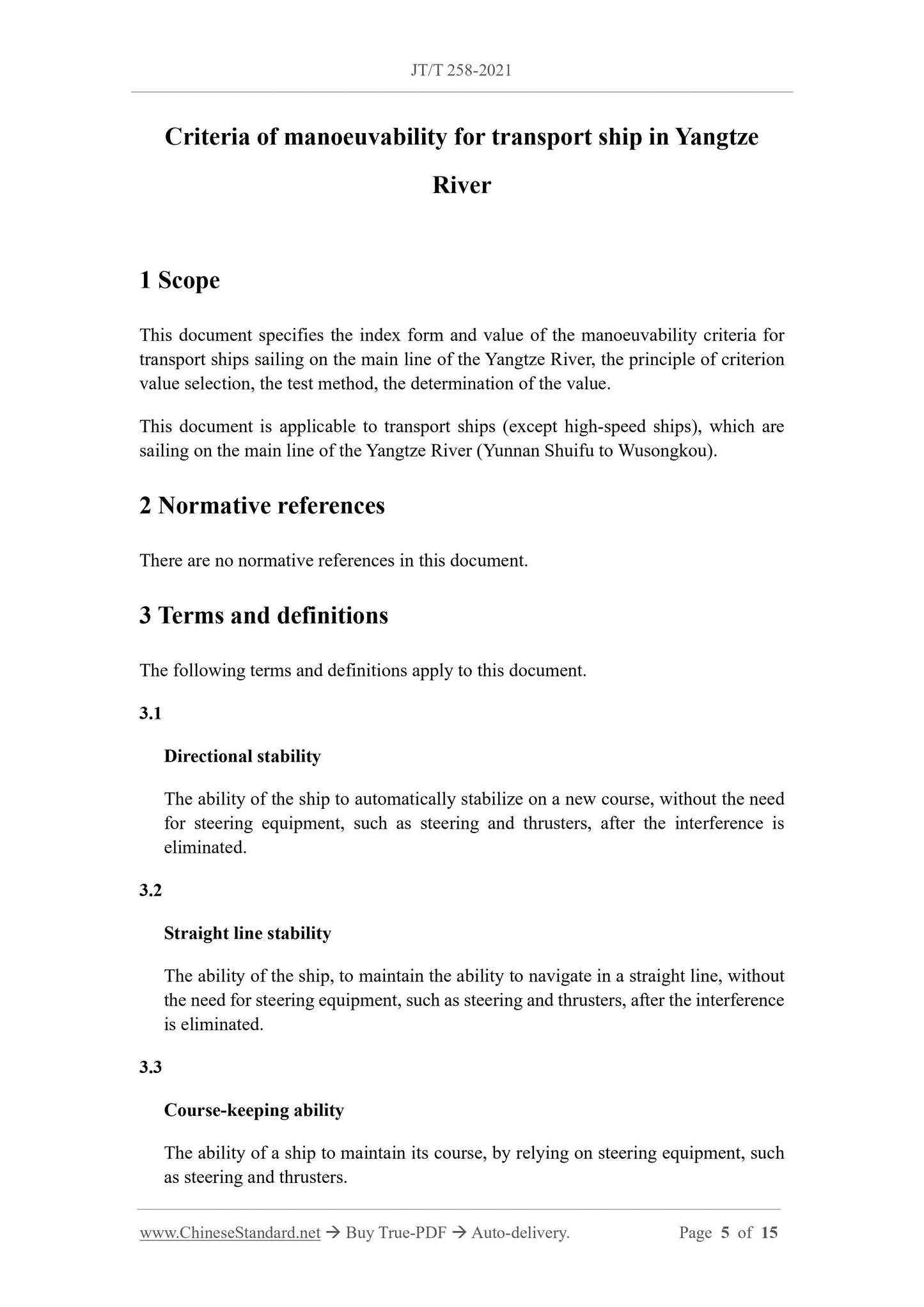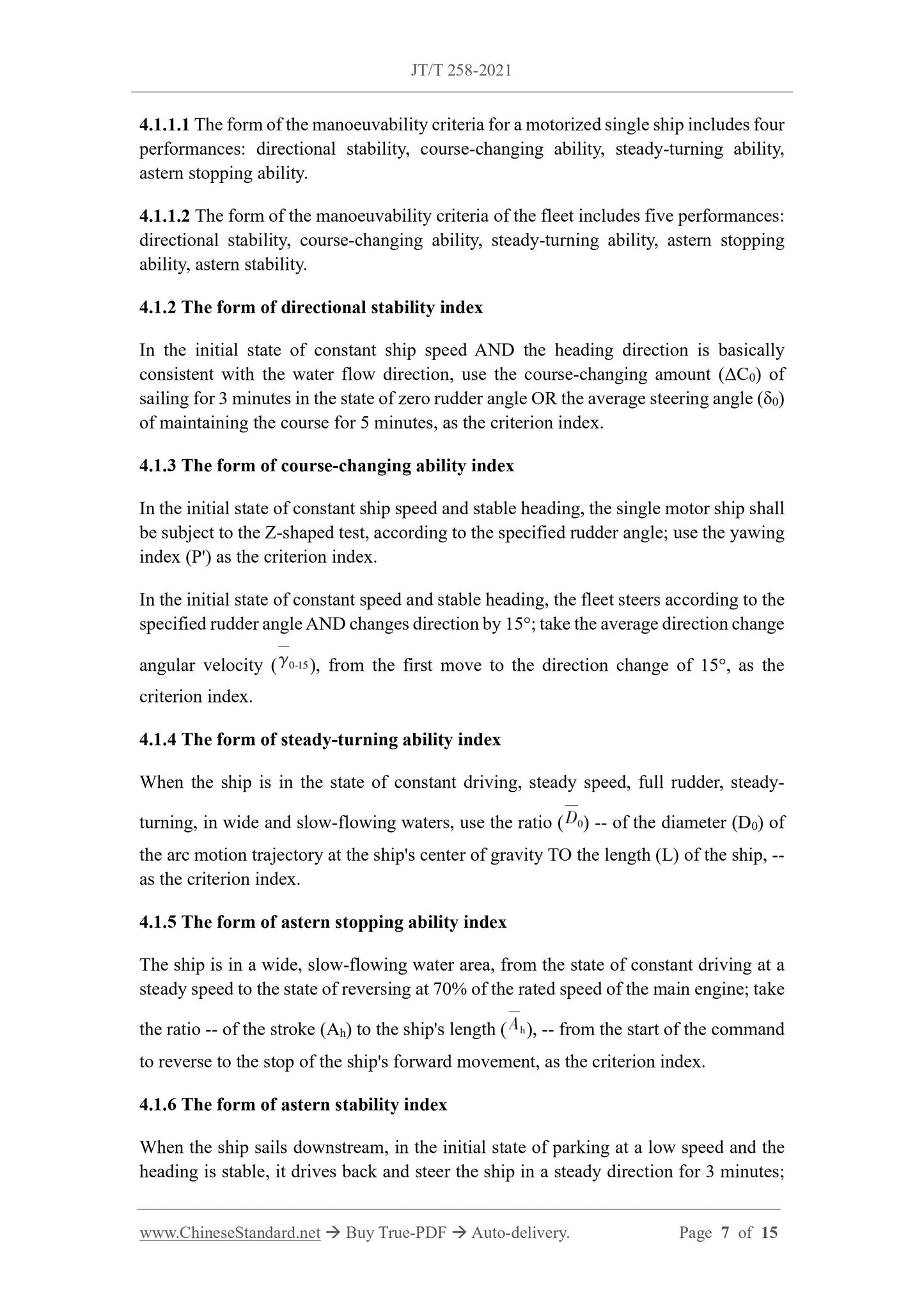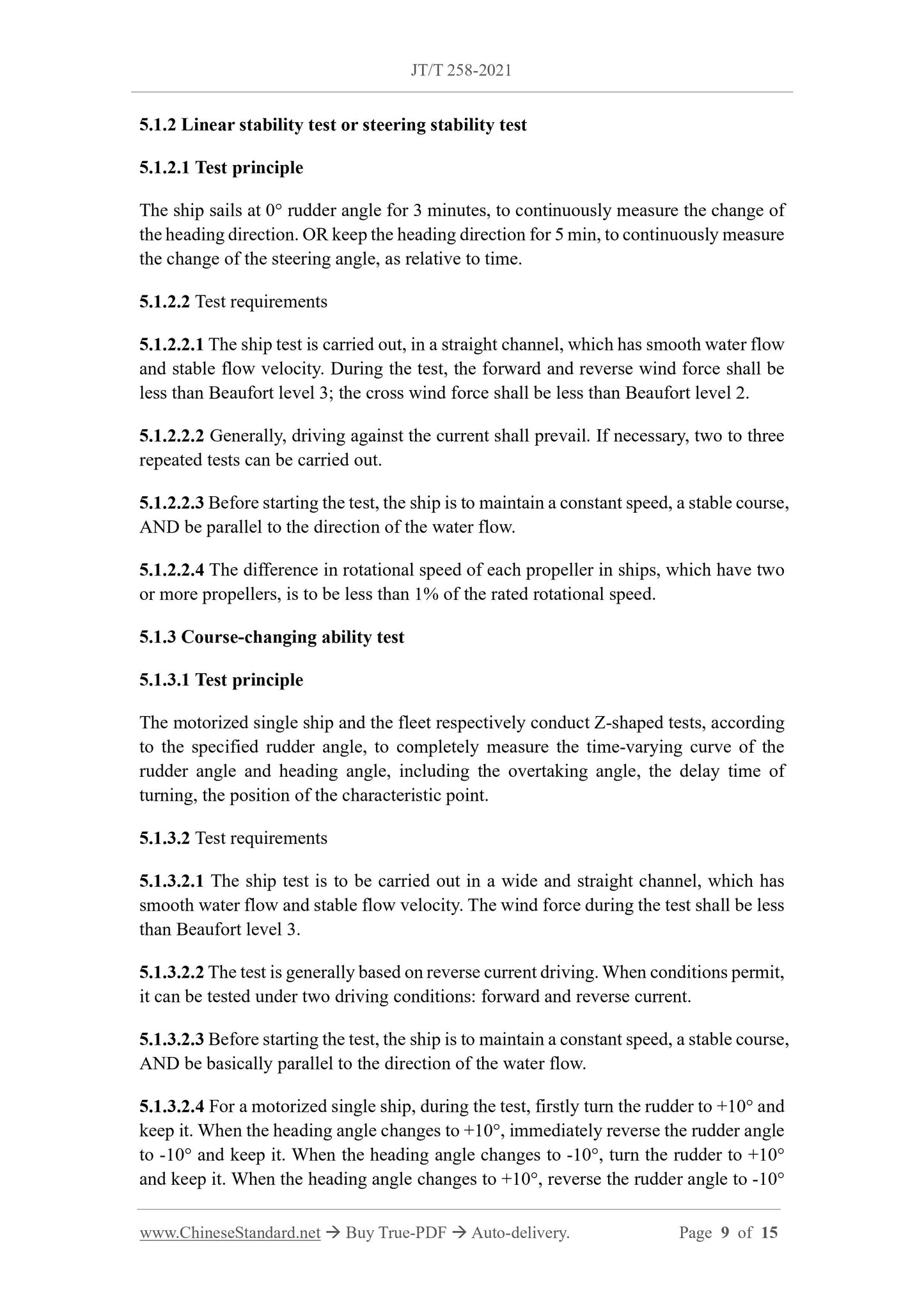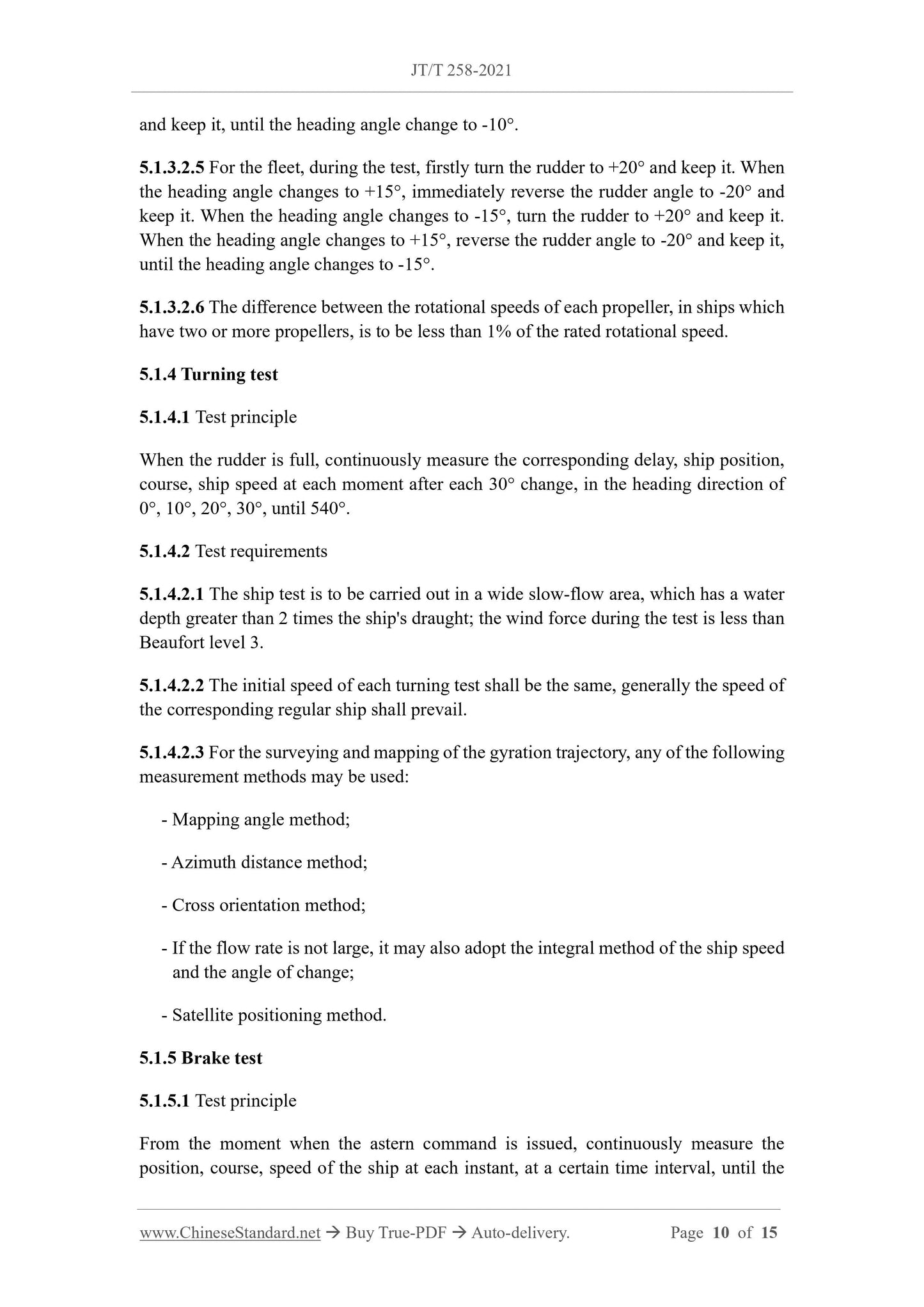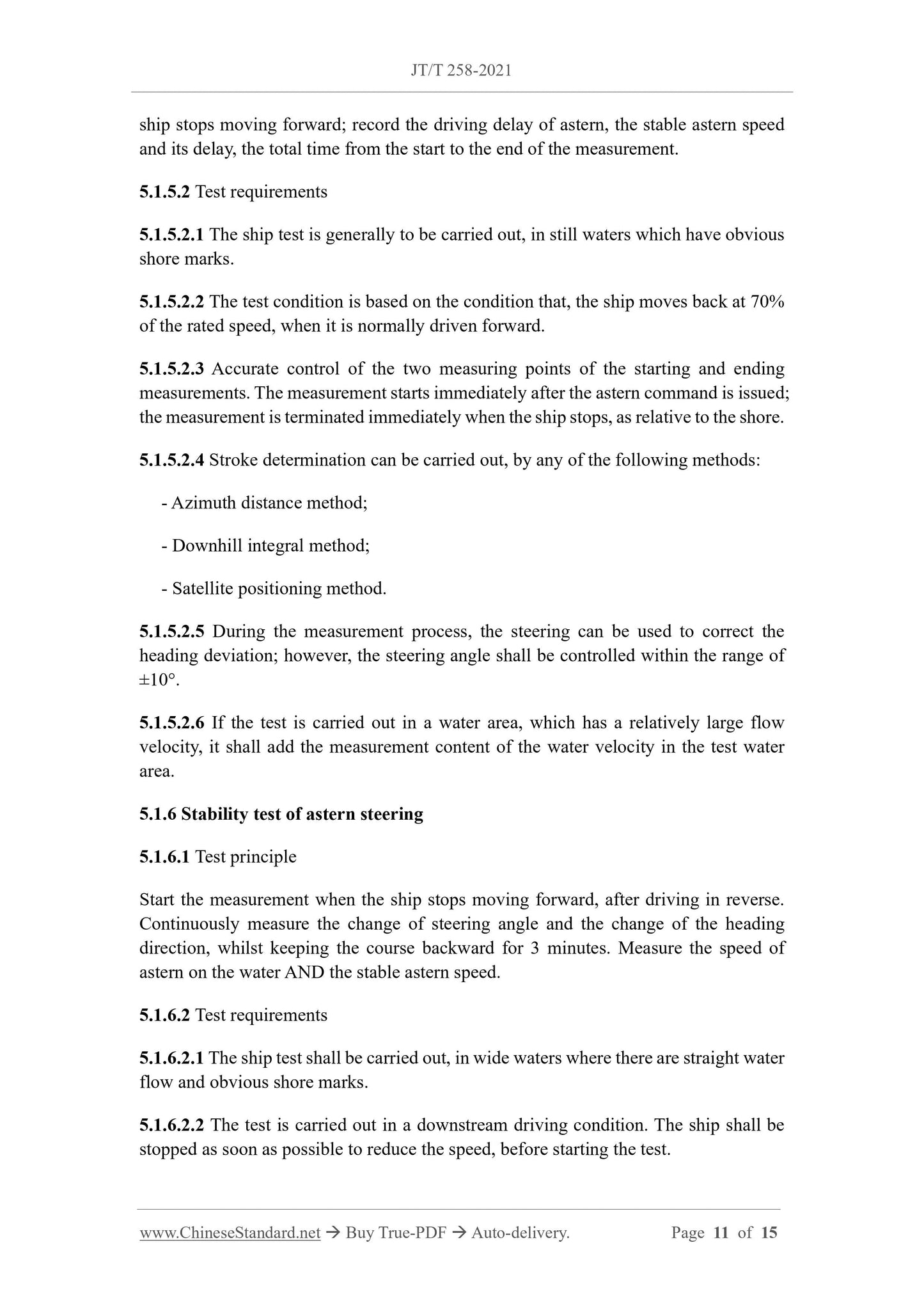1
/
of
7
www.ChineseStandard.us -- Field Test Asia Pte. Ltd.
JT/T 258-2021 English PDF (JT/T258-2021)
JT/T 258-2021 English PDF (JT/T258-2021)
Regular price
$170.00
Regular price
Sale price
$170.00
Unit price
/
per
Shipping calculated at checkout.
Couldn't load pickup availability
JT/T 258-2021: Criteria of manoeuvability for transport ship in Yangtze River
Delivery: 9 seconds. Download (and Email) true-PDF + Invoice.Get Quotation: Click JT/T 258-2021 (Self-service in 1-minute)
Newer / historical versions: JT/T 258-2021
Preview True-PDF
Scope
This document specifies the index form and value of the manoeuvability criteria fortransport ships sailing on the main line of the Yangtze River, the principle of criterion
value selection, the test method, the determination of the value.
This document is applicable to transport ships (except high-speed ships), which are
sailing on the main line of the Yangtze River (Yunnan Shuifu to Wusongkou).
Basic Data
| Standard ID | JT/T 258-2021 (JT/T258-2021) |
| Description (Translated English) | Criteria of manoeuvability for transport ship in Yangtze River |
| Sector / Industry | Highway and Transportation Industry Standard (Recommended) |
| Classification of Chinese Standard | U14 |
| Word Count Estimation | 9,927 |
| Issuing agency(ies) | Ministry of Transport |
Share
